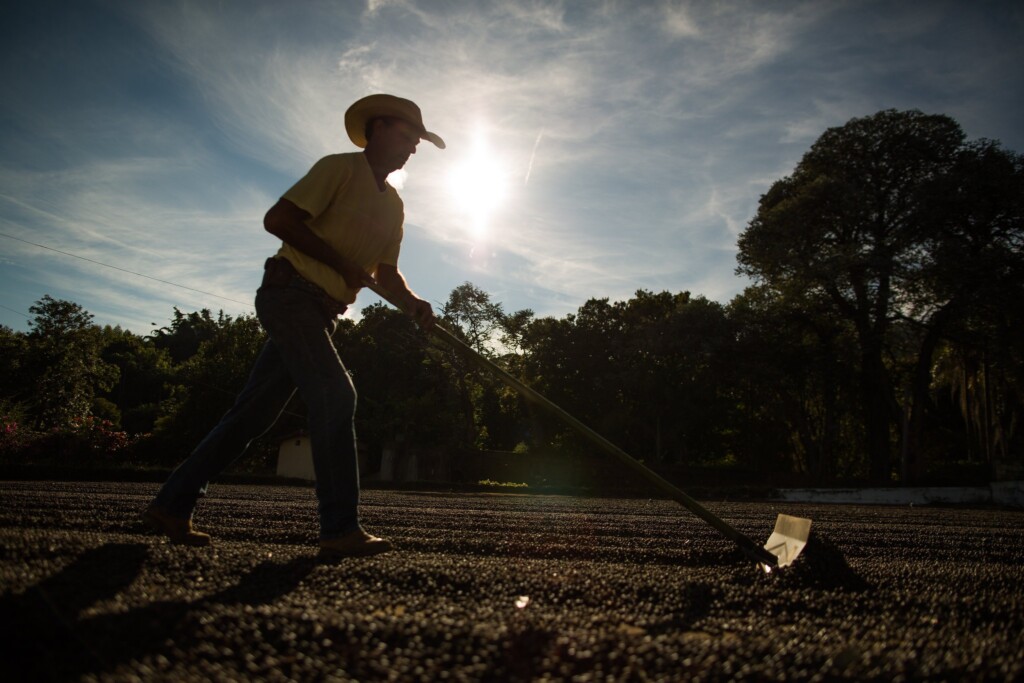Brazil has traditionally been the world’s largest producer and exporter of coffee; the country is also its second-largest consumer market. Coffee is the “Made in Brazil” product with the highest number of Geographical Indications (GIs) registered in the National Institute of Industrial Property (INPI).
This interesting aspect reflects not only the quality of coffee but also its special bond with the landscape, history, territory, human element, and national culture. The beauty of the regions where coffee is produced in Brazil, together with nature, results in a product of special flavor, authentic and unique, like our country.
Alta Mogiana
The Alta Mogiana region has been linked with coffee for more than 100 years. The main characteristic of this coffee is a velvety and creamy body. It has a strong, fruity aroma with soft notes of chocolate and nuts, with medium and balanced acidity.
Campo das Vertentes
Campo das Vertentes is a Geographical Indication from the Minas Gerais state granted for green-bean coffee, industrialized roasted coffee beans, and ground coffee. The region’s climate is mild, with a cool, rainy summer and a very cold winter in the higher areas. These are positive conditions for the quality of the region’s coffee, which is known to be very sweet, with a balanced body and hints of chocolate and nuts.
Caparaó
The product is grown in ten municipalities in the states of Espírito Santo and Minas Gerais. The combination of factors such as climate, soil, and the way coffee is made results in a unique product of a remarkable balance between acidity, sweetness, and aromas.
Espírito Santo
The state of Espírito Santo is a national and global reference for Conilon coffee development, which began in 1912. This variety is mainly grown in regions with higher temperatures (averages varying between 22 °C and 26 °C) and at lower altitudes (up to 600 m). Lower altitudes usually turn Conilon into a full-bodied coffee with chocolate and almond flavors, while at higher altitudes it has more floral and fruity aspects, diversifying its aromas and flavors.
Matas de Rondônia
The genetic basis of the plants that produce 80% of the Matas de Rondônia coffee is the result of crossing between the Conilon and Robusta varieties, selected over the years by local producers. The result is sweet, chocolaty, woody, fruity, spicy, and herbaceous. Brazilian legislation requires all rural properties located in the Amazon Biome region to preserve the native vegetation in 80% of their area.

Matas de Minas
Matas de Minas is a region in the Minas Gerais state that has become famous for producing coffee in raw, processed, roasted, and ground beans. The region is also obtaining recognition for the production of specialty coffees, traded both in domestic and international markets.
Mantiqueira de Minas
Located in the State of Minas Gerais, the Mantiqueira de Minas region produces high-quality coffee that follows a centuries-old tradition. The Mantiqueira de Minas “Denomination of Origin” guarantees consumers a unique product, characterized by sweetness and slightly citric acidity.
Montanhas do Espírito Santo
With a strong and bright acidity, the aroma of chocolate and sugarcane is typical of the coffee produced in the mountains of the state of Espírito Santo. Altitudes range from 500 to 1,400 m, and average annual temperatures from 18°C to 22 °C. While the coffee from higher areas has more exotic notes, the one from lower regions has more woody, cereal, and astringent notes.
Oeste da Bahia
Oeste da Bahia is a region that predominantly occupies the Cerrado biome. In this region, coffee is grown in areas with more than 700 m of altitude. The coffee produced in this region is recognized for its pleasant flavor, with good fragrance and slightly fruity and floral aroma, and also excellent sweetness and good acidity.
Norte Pioneiro do Paraná
Located in an area favorable for coffee cultivation, it has ideal edaphic-climatic conditions to produce fine coffees, whose beverage is distinguished by attributes such as sweetness, accentuated body, pleasant citrus acidity, and aroma of chocolate, caramel, floral, and fruity citrus, as well as a surprising aftertaste.
Região do Pinhal
The history of coffee cultivation in this region dates back to 1850. The region has a mild climate, with an average annual temperature ranging from 14 °C to 21 °C. The coffee from the Pinhal Region is characterized by a balance of body, acidity, and sweetness, with an intense aroma and a long finish.
Região do Cerrado Mineiro
Coffee from the Cerrado Mineiro region is the result of the combination of the region’s climatic conditions with the quality of the coffee beans produced there. You can taste the intense and unique blooms, uniform ripening, and concentrated harvest. The authentic Cerrado Mineiro coffee has intense aromas ranging from caramel to nuts, with gently citric acidity and a long-lasting chocolate flavor.